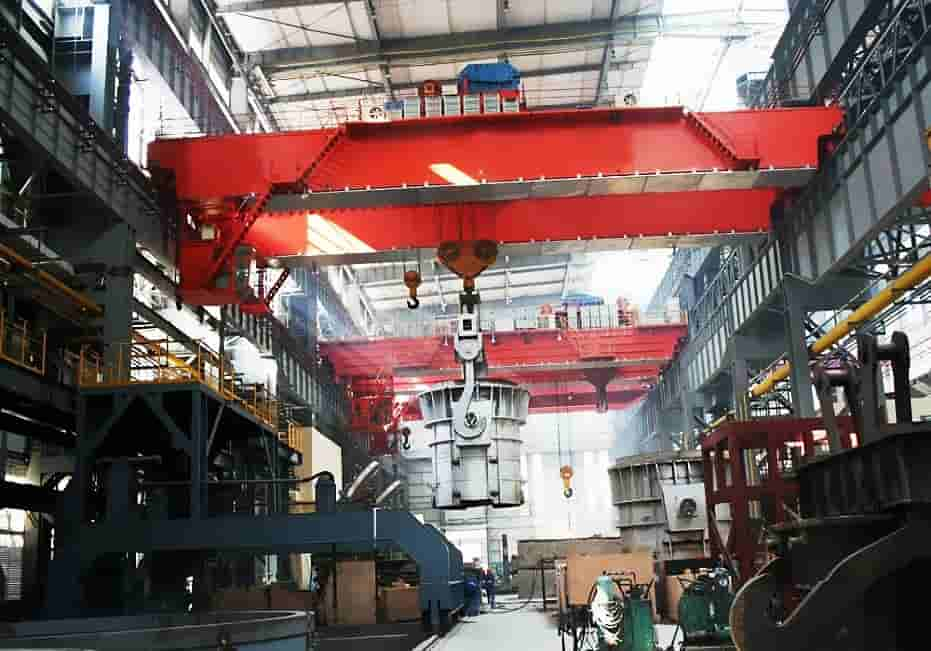Metallurgical cranes refer to crane equipment used to lift molten metal. It can be divided into single-beam metallurgical cranes and double-beam metallurgical cranes . In 2007, after a serious production accident occurred in a steel plant in Tieling, Liaoning that caused 32 deaths, in order to ensure the safety of the use of this type of equipment, combined with the production and operation of the company, the relevant units learned from experience and proposed to the metallurgical crane used by the steel plant Clear technical requirements and standards, and order the user unit to make rectifications:

(1) If a general-purpose bridge crane has been used to lift molten metal, it should be replaced with a casting crane that meets the requirements of JB/T7688.15-1999 “Technical Conditions for Metallurgical Cranes, Casting Cranes”. If the unit that does not have the conditions to replace the casting crane due to factors such as plant and foundation, in addition to meeting the regulations and standards of general overhead cranes, the original crane must be modified and meet the requirements of the following basic technical conditions:
(2) For all types of hoisting machinery with a rated lifting capacity greater than 10t and electric hoist as the lifting mechanism, it is not allowed to lift molten metal.
(3) For all types of hoisting machinery with a rated lifting weight less than or equal to 10t and using electric hoists as the lifting mechanism to lift molten metal, the original crane must be replaced or modified and meet the requirements of the following basic technical conditions:
(4) The transformation of the above cranes must be carried out by a unit with the qualification for transformation permits, and the transformation must be carried out informing procedures. The transformed cranes must be supervised by a qualified inspection and testing agency in accordance with the “Lifting Machinery Supervision and Inspection Rules” and the requirements of this article. It can be put into use according to regulations only after passing the inspection.
(5) The transformation of the crane for lifting molten metal should be completed before June 30, 2008. The user unit should immediately formulate a replacement plan or transformation plan, and implement it quickly, otherwise it should stop using it. During the implementation of the transformation, the user unit shall monitor the use and must take effective measures to ensure the safe operation of the equipment.
(6) The periodic inspection period of cranes for lifting molten metal has been shortened from 2 years to 1 year.
Newly installed cranes for lifting molten metal refer to the lifting machinery for lifting molten metal that has been delivered and installed from the date of publication of this article, and does not include the lifting machinery for lifting molten metal that is overhauled, modified, or relocated.
(1) The requirements for newly installed cranes for lifting molten metal are as follows:
(2) Cranes for lifting molten non-metallic materials (the temperature is lower than molten metal) and hot solid metals may be appropriately relaxed according to the degree of danger in the workplace, or they may be handled with reference to the above requirements.
Local quality and technical supervision bureaus should take effective measures as soon as possible to do a good job in the rectification of non-metallurgical cranes used in the metallurgical industry to prevent the recurrence of similar accidents. If you have any problems in your work, please report to the Special Equipment Safety Supervision Bureau of the General Administration in time.
The bridge crane used in metallurgical occasions is a relatively special type of equipment, and its requirements are much higher than those of ordinary types of cranes. In order to ensure production safety, relevant units must select regular manufacturers in accordance with the standards.
Contact our crane specialists
Send us a message and we will get back to you as soon as possible.